
The Callisto Protocol (PC) - Review
by Paul Broussard , posted on 07 December 2022 / 3,820 ViewsI have a fondness for astronomy. As a kid I got hooked on Patrick Stewart’s “Nine Worlds,” and spent a decent amount of time during my childhood years peering through telescopes and reading books on astronomy. So when the prospect of an AAA title set on a real, offworld location in our own solar system came up, I was thrilled. Jupiter and the Galilean moons were one of the first things I saw through a telescope, and having a video game that takes place entirely on one is a really cool concept... a concept that was entirely wasted the moment the game begins and it's snowing - Callisto doesn't have an atmosphere, it can't snow there!
Petty quibbles about Jovian accuracy aside, The Callisto Protocol is a game I’ve been looking forward to for a while. Ever since EA decided that Dead Space’s inability to generate a profit equivalent to the GDP of a small nation was reason enough to shut the series down, there’s been a space-horror shaped hole in my heart, with only a quick flirt with Alien Isolation to kindle the romantic spirit of having my face chewed off by something with a phallic-shaped mouth. Now space-horror is back, at least for a little while, and it's time for me to get out there and find true love.
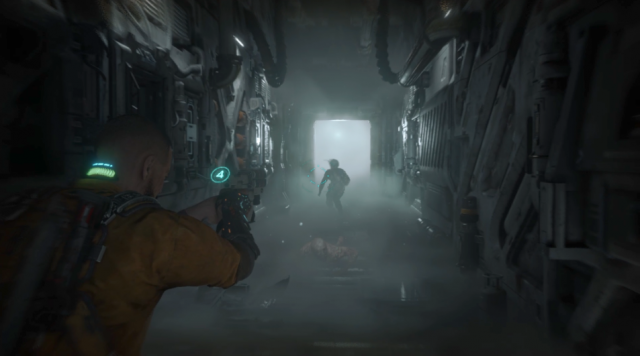
Let's get the summary out of the way before I start complaining about things: it’s half past the future and our lead protagonist, Jacob Lee, is running a delivery for space FedEx to a prison on Callisto, which for some reason has gravity comparable to Earth’s now, despite having roughly 20% of its mass (alright, I promise I’ll shut up about astronomical precision now). On his way out his ship is boarded by some space vigilantes and winds up crashing into the surface. After waking up, Jacob finds himself inexplicably arrested and thrown into prison. Almost immediately, a zombie(?) outbreak occurs and Jacob must navigate his way through the prison and the new dangers within it to survive.
The narrative elements of Callisto are very barebones, to the point that I’d argue the story is detrimental to the game. Horror games don’t necessarily need deep and complex narratives, but I would argue they benefit heavily from solid world building; giving your title a sturdy foundation for the actions happening within it makes everything more believable and the atmosphere more intense. This might just be a personal annoyance, but the speed with which the prison goes from normal to infested makes it all feel cheap and fake. By the time our character wakes up after his first night in prison the entire place has become a giant zombie rave. I think if we had gotten to maybe spend some time in normal prison first, get shoved around by some guards, and so on, before slowly watching the outbreak claim its earliest victims and then beginning to spread, that would have been much more engrossing, as well as lending the atmosphere an air of creepiness and intensity that it’s sorely lacking.
What is intense, however, are the visuals. When it’s running well, The Callisto Protocol looks very pretty (in a blood-soaked, misery-for-all kind of way). There are a ton of death animations, both for the player and enemy characters, and they are all absolutely brutal and depicted in unflinching detail, to the point where I visibly sucked in wind watching the agony Jacob went through at points before he was finally put out of his misery. Speaking of detail, characters look incredibly realistic; the faces in this game have probably overtaken Devil May Cry 5 for the title of “Best Looking Faces in a Game That I Really Didn’t Expect.” Stuttering was a major problem at launch on PC, but a patch that went live about a day afterwards appears to have mostly solved those issues, so the people at Denuvo can rest easy knowing that I’ll wait at least a few more weeks before firebombing their offices.
That said, one of the weirder design choices for me is the decision to model the characters after real-life actors. I’ve never understood this thought process - one of the biggest advantages that animation has over live-action films is that characters can look entirely unique. When I watch the Mandalorian, I’m inevitably going to notice that the main antagonist looks exactly like the fried chicken drug lord from Breaking Bad, and enjoying the show requires an extra bit of suspension of disbelief as a result. Animation doesn’t (or, at least, shouldn’t) have to deal with this hiccup, but designing your characters to look exactly like live-action actors is taking one of the biggest advantages your medium possesses and promptly dropkicking it three parking lots over. Even after finishing the game, I didn’t associate the secondary protagonist as her own character, but just as a weird extension of that one girl supe from “The Boys.” I suppose I’m lucky that nobody watched any of those live action Transformer movies after the third one or I might have had the same experience with the main protagonist.
But let’s stop beating around the blood-soaked bush and actually get into how the game plays. Given that The Callisto Protocol is a spiritual successor to Dead Space, it’s no surprise that it has some similarities. Jacob is controlled from an over-the-shoulder third person perspective, has to traverse an off-Earth facility overtaken by zombies in the hopes of escape, and every so often someone will call him up to tell him how stupid he is. Jump scares, panicky combat, and blood are all present in droves. So far, so Dead Space.
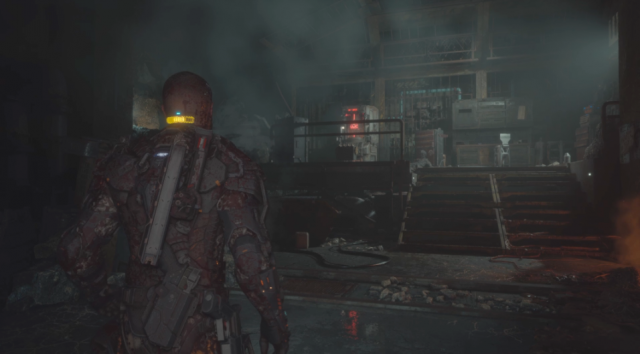
Mechanically, however, Callisto separates itself distinctly. Combat is fairly entertaining and has a nice rhythm to it as well, and is also where the game differs the most from its source material. Unlike Dead Space, where putting distance between you and enemies is key, and melee attacks are more of a last resort, the combat here involves a pretty even mixture of guns and close quarters fighting. Melee combat is only really suited to small engagements, and requires you to dodge back and forth before going in for some hits. Guns are more powerful, but also have limited ammo, so they’re best saved for thinning enemy squads so you can get things down to more manageable numbers ready for melee brawls.
Where things get really interesting is the incorporation of the GRP. On the surface, it looks like it functions very similarly to Dead Space’s Telekinesis Module. There are two crucial differences, however: the GRP has limited uses that recharge over time and it can pick up any non-boss enemy. There are simple things you can do with this, like pushing enemies away to get some space, or throwing them into one of the frankly ridiculous number of spiked walls or giant fans that litter the prison, but you can also use it to reset enemies in a melee combo or break their guard.
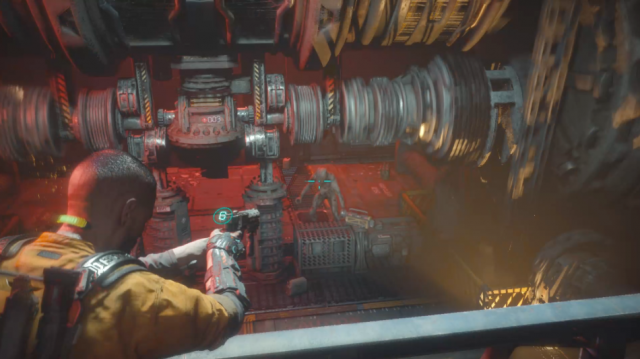
This opens up the combat in a way that I don’t think I’ve ever seen a horror game try before, with the potential for long, extended combo strings and the ability to quickly dispatch foes. It almost feels like a gory, distant relative to God Hand with a fondness for guns. There’s a surprising amount of depth in other areas as well. For example, you can shoot enemies in the kneecaps to trip them, and then finish them off (as best I can tell) regardless of health with a melee attack. Enemies can be pushed into one another to briefly incapacitate both while you finish off another. Perhaps my personal favorite: if you unlock explosive bullets, you can use enemies as your own personal bomb in a group.
The core of combat, though, is about controlling space. If you happen to let a group of enemies get close to you, your odds of survival probably aren’t great. Especially in the late game, when The Callisto Protocol starts to spawn good chunks of zombies in close proximity, dispatching them before they can gang up on you is imperative. This provides an interesting mix of the aforementioned shooty-shooty-smack gameplay mentioned earlier, as well as the requirement for environmental awareness; all those ridiculous spikes and fans don’t do much if you can’t identify them in the heat of the moment.
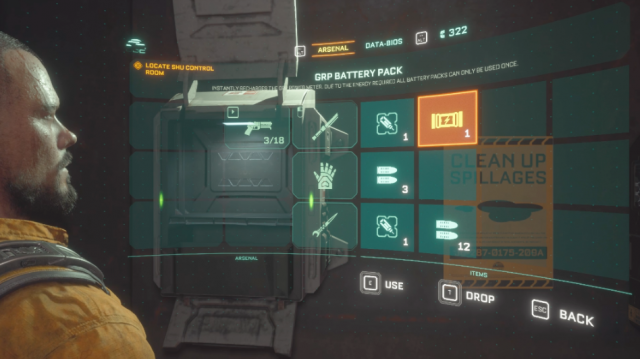
It’s in this regard that a lot of the complaints that some of my fellow reviewers have made about combat being too difficult, or enemies being too overwhelming, are admittedly lost on me. If you do get surrounded, your chances are slim, but that’s the point: you’re supposed to dispatch enemies before they get close. The game gives you plenty of methods to prevent yourself from getting surrounded as well, which leads to a nice, chaotic rhythm in the moment, where you're desperately trying to account for everything around you and make smart tactical choices about who to deal with first and how to expend your limited resources. Admittedly some of these methods for quickly dealing with enemies require some experimentation; The Callisto Protocol doesn’t, for instance, tell you outright to try and kneecap zombies, so maybe there’s a required degree of creativity in order to enjoy it. Personally, as one of those people who can find endless enjoyment in finding new and more efficient ways to dispatch enemies in Resident Evil or The Evil Within, I found that when Callisto’s combat fired on all cylinders, it was some of the most pure fun I’ve had this year.
This unfortunately means we have to highlight the areas where the combat doesn’t work so well, and that’s most prominent in the boss fights. For about 80% of the game, The Callisto Protocol has no bosses at all, only to throw five at you in the last 20% or so. Well, I say five - really it’s two, but one of them gets repeated four times over. All five of these encounters have to be completed almost perfectly to progress: one hit from either of these enemies will instantly kill you regardless of health, and they both have health bars the size of the moon they live on, so you better get really good at fighting these things.
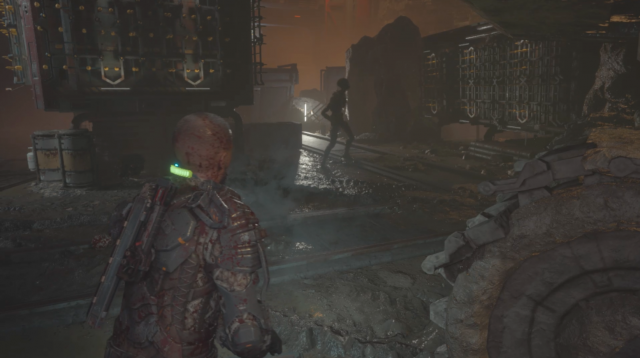
And this really shines a light on the imperfections of the game’s aforementioned dodge mechanic. Dodging in The Callisto Protocol is entirely context sensitive, which has often proved to be a problem in other titles that try it, and is unsurprisingly an issue here as well. When an enemy swings at you, you can press left or right to dodge. If an enemy swings multiple times, you have to press the opposite direction to the one you pressed before to continue dodging. It sounds easy enough on the surface, but I often found myself failing to dodge and getting instantly beheaded for my troubles, despite pressing a direction. I think this is because the game has a pretty tight window for what it considers to be left or right relative to an enemy, and if you press a direction that is slightly off, you end up getting a face-full of monster claw. If I had to guess, I would say this happens roughly 1-2% of the time, which is infrequent enough to not matter that much in regular combat where any individual attack doesn't deplete that much of your health. Against bosses that kill you instantly and which you have to repeatedly dodge to survive, however, that inconsistency becomes a much more serious issue.
What really hampers the experience at points are some of the rather baffling design choices. Chief among them are the game’s UI and checkpoint system. The Callisto Protocol tries to emulate Dead Space’s UI by displaying all relevant information on the character model. A good concept, in theory, but a UI is only useful to the degree that it can be read, and the health bar & GRP meter on Jacob are so small that it’s very difficult to read them consistently in combat, which resulted in me dying without even realizing that my health was low. And on the subject of deaths, the checkpoint system is absolute garbage. It doesn’t save after shop purchases or other similar actions, meaning that you can often be forced to redo a bunch of tedious busywork if you happen to die shortly afterwards. There's a manual save option, but it's a lie; if you manually save and then reload, you’ll just be sent back to the most recent checkpoint.
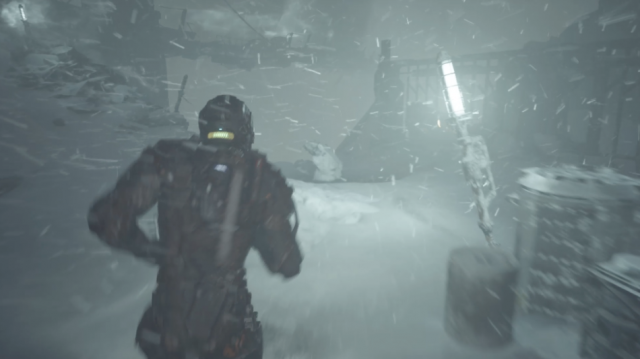
From a level design standpoint, The Callisto Protocol is very linear and will often slam points of no return on you with little to no warning ahead of time. This means that if you come to a fork in the road and choose what turns out to be the story pathway first, then sometimes you just won’t get any items or rewards that were lurking on the optional pathway. Linear games aren’t inherently better or worse than any other genre, but in a survival-horror title where the player is expected to scrounge for ammunition and supplies, gating them off suddenly and undeservingly seems contrary to the design philosophy. It’s bizarre that a title trying to emulate Dead Space would miss that game’s simple yet elegant solution to this very problem: the waypoint system, with a line that tells the player where the next story objective is, so that they can safely explore optional areas first. No such mechanic exists here.
Enemy design is a bit limited, with pretty much every grunt breaking down into categories of: guy that charges at you and tries to beat you up, guy that charges at you and explodes, guy that vomits at you, and then some enemies that are reminiscent of the clickers in The Last of Us, right down to the fact that despite supposedly being hyper-sensitive to noise they can’t hear the death throes of their comrades as you shiv them in the throat. For a ten or so hour game, it’s not the biggest problem, but this lack of variety does start to feel repetitive, and what’s odd is that it feels like there were plenty of opportunities to spice things up that were ultimately ignored. For instance, robot sentries are introduced about 30 minutes into the game. They can kill Jacob instantly and, for the most part, need to be stealthed around. The game tutorializes robot sentries heavily, which I assumed was setting them up to be a significant presence, but they only ever show up twice in gameplay afterwards. It feels like there was room to use these or other elements to break up some of the repetitiveness of combat encounters, but they go significantly underused.
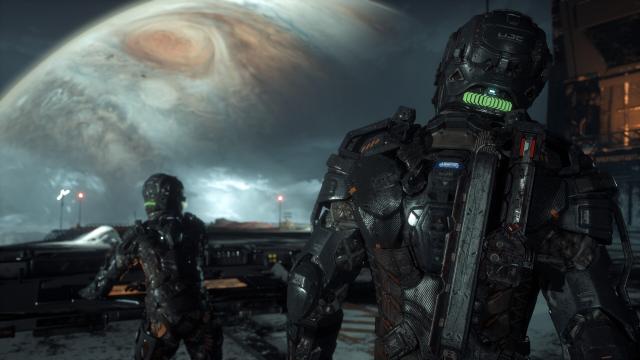
I think all of this raises a significant question that’s worth considering: at what point does a game look too good for its own good? I mentioned before that Callisto Protocol has some amazing visuals, a ton of incredibly gory and brutal death animations, and even some ridiculously good-looking faces, but here’s the question: was that worth the effort? I’m not entirely sure how resources would have been allocated differently, if they could be, but I have to wonder if the decision to put so much effort into making it satisfying to look at could have been better spent on making it more satisfying to play. Perhaps there’s an audience out there that just really, really enjoys watching their character get brutally dismembered in various unique ways, but I think past a certain point the marginal returns of gory death scenes start to diminish compared to what could have been accomplished by improving the gameplay elsewhere.
Put another way, if you removed some of the polygons from Jacob’s face, or took away one of the several unique animations depicting a monster tearing his limbs off, I can’t imagine I would feel the game was worse. However, mixing up gameplay elements or providing greater enemy variety would have improved my opinion of Callisto Protocol. Even if the effort to create a death animation is nowhere near the manpower required to model, rig, and program a new enemy type, much smaller and easier-to-implement inclusions like a more polished dodge, the equivalent of the waypoint system, or the ability to skip cut scenes on repeat playthroughs would have helped out quite a bit as well. The fact that the season pass brags about adding even more death animations, rather than something that matters to the core gameplay experience, speaks to what is in my opinion a problematic mindset. Games need to play well before we can care about them looking good.
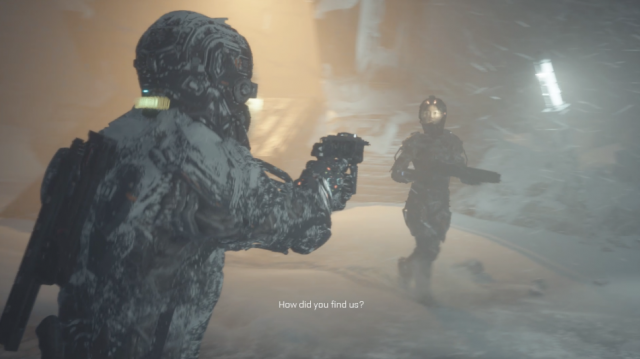
The Callisto Protocol has some incredible potential, but could really benefit from more polish and a refocusing of priorities. The combat, when it’s clicking, is genuinely fantastic for a more action-driven horror title. But much of what is built around that combat lets it down: the pacing and atmosphere are largely non-existent; the level design, UI, and checkpoint system are very player-unfriendly; and there just aren’t enough set pieces and gameplay diversions to prevent the combat from getting somewhat repetitive by the game’s end. At its best, The Callisto Protocol equals and even exceeds the series from which it draws so much, but it can’t sustain that consistently and winds up falling short of my hopes for the game. If a sequel improves on those flaws and expands on what's here, the foundation is solid enough that the sky is the limit on how good The Callisto Protocol 2 could be. Or, more accurately, the space is the limit, because Callisto doesn't have an atmosphere!
VGChartz Verdict
6.5
Decent
This review is based on a digital copy of The Callisto Protocol for the PC
More Articles
Here's a friendly reminder that a 6.5 is not a "bad" game. I think Callisto is still a decent experience, and depending on your tastes, maybe even worth full price. To that end, I'm including this as a sort of addendum to a general score, hopefully as a way of providing a slightly more robust recommendation system than just a single number.
You will probably enjoy Callisto Protocol if: You're looking for a very action-oriented game in a horror setting, rather than a standard horror experience that focuses on atmosphere or genuine scares. Think Evil Within, but with an even greater emphasis on combat and less on exploration. If you like experimenting with combat systems that have a surprising amount of depth, consider this even more heavily recommended.
You might enjoy Callisto Protocol if: You're looking for a spiritual successor to Dead Space. Despite having many of the same staff as Dead Space and effectively touting itself as being very similar, Callisto Protocol only really carries surface level similarities. Depending on how starved you are for Dead Space, that may be enough if you can't wait until the remake.
You will probably not enjoy Callisto Protocol if: You want an atmosphere heavy, slower paced horror game. You probably shouldn't have expected that from Glen Schofield to begin with, but Callisto leans even more heavily into the action than Dead Space did.
I had, well, I wouldn't say high hopes, but some expectation that it'd be a worthy successor to Dead Space. Have to say most of what I've read doesn't match my tastes/desires, so I've taken it off my wishlist.
This is a great game. Reviews dont do it justice. I am, enjoying every bit of it.








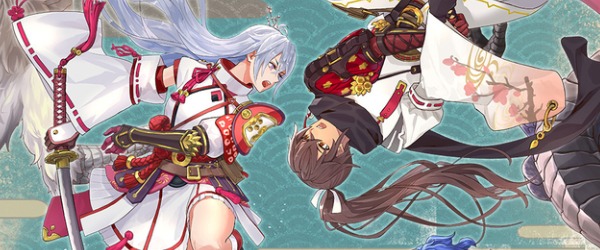
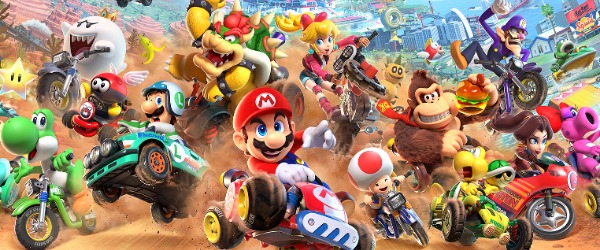
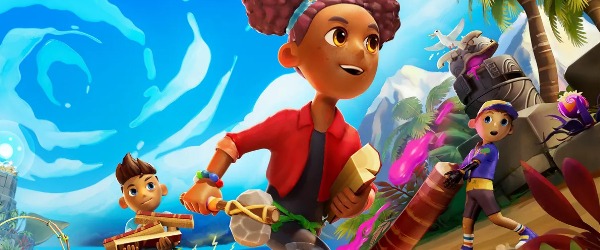
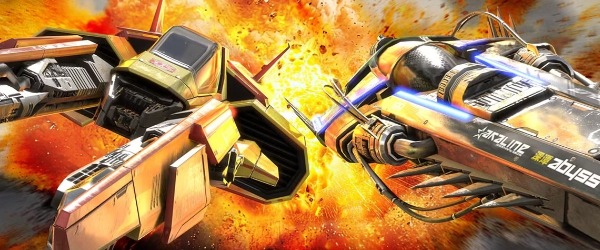













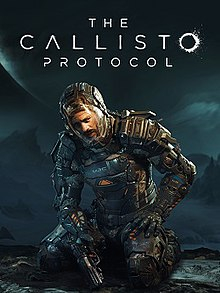



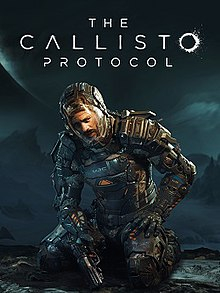

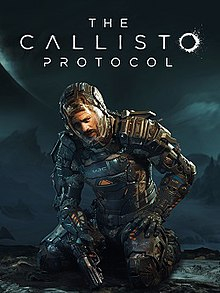

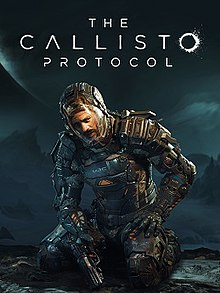

 Essay Pro
Essay Pro